Scythes, nails and axes were in motion. Blood poured in streams, heads fell left and right. Everything to have peace with the dead people returning from the afterlife. And all this in Poland, in the most true history and not so long ago!
The heroes of the series "The Walking Dead" could learn a lot from our ancestors. First, our ancestors recognized zombies during their lifetime ! Well, the man who was to return from the afterlife after death as a so-called striga or other kind of living corpse, most often stood out among his neighbors.
He was born with teeth or then grew two rows of them. Or he might not have an eyebrow. It was either too tall or too short. Lame or hunchbacked, he also seemed suspicious. Oh, God forbid that his heart beat on the right side or had scissors-shaped marks on his body!
Patients with tuberculosis, leprosy or porphyria were also obviously in the circle of suspicion. Because how do you really know whether tuberculosis is spitting or getting drunk with blood? If the leper's body is disintegrating, is he still alive, or is he already a demon ? Patient with porphyria, fearing the sun and reacting to it allergically, also gave a strange impression. And there were also suicides, unbaptized children ...
When such a suspect type died, it was a good idea to protect yourself against his return. In the light variant, this included, for example, the location of the grave on the outskirts of the cemetery. Common funeral practices to prevent the return of the deceased could have been adequately enriched.
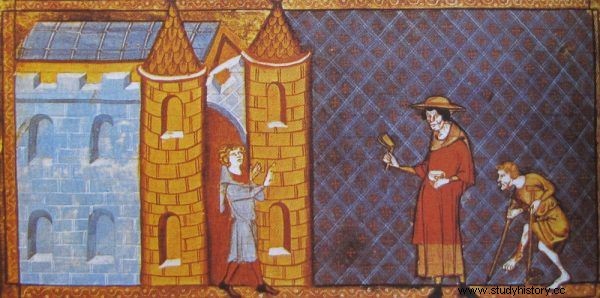
The lepers were among the "suspects" in hunting the living dead (source:public domain).
The suspect's grave could be dug up and put the dead man on his stomach , to bite into the ground . Or a sickle was placed around the corpse's neck (as in the seventeenth and eighteenth century burials in Drawsko on the Noteć river) so that when you try to leave the grave, its skull would be torn off.
In the hardcore variant, the deceased's head was immediately cut off with a scythe and placed in the legs and the body was pierced with a stake or nails, restrained and pounded with stones. However, not all zombies could be detected while alive and had them "under control" after death to prevent their unwanted return ...
A living dead in a picelhaub
In the last century, an astonishing event took place in the vicinity of Wieluń.
A farmer fell into lethargy and was put in a coffin when he died. Late in the evening, as the old women sang pious songs by the coffin, the deceased began to move suddenly . The babies jumped out of the hut with a terrifying scream that it was a striga - described the historian Bohdan Baranowski.
The rest is easy to imagine. A commando consisting of neighbors hastily entered the action. Knocked the "dead man" with a stake and then cut off his head . This measure worked perfectly, as the deceased did not try to get out of the coffin anymore - concludes Baranowski.
The inhabitants of the village near Brzeziny reacted similarly in 1914, during World War I. After the battle, German soldiers were buried there, but after a dozen or so days, the authorities decided to exhume them and move them to another, more suitable place. During this move, the peasants noticed that an exhumed NCO looks quite "fresh" and he is extremely bloated, as if he got drunk on the sucked blood!
Of course, they wanted to intervene and shorten Teuton's suspiciously ruddy head, but the other living soldiers strongly objected. That is why a few years later rumors were circulating around the area about the terrifying ghost of a German . Eventually, however, they stopped. Why?
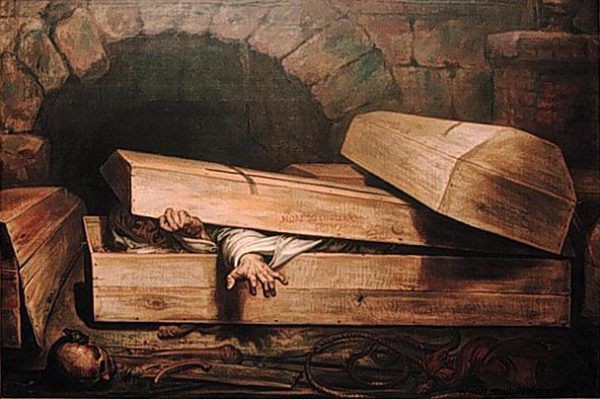
The fear of the sudden life of the dead has a very long history. Painting by Antoine Wiertz (source:public domain).
It is possible that when the invaders were gone, the peasants finished what they had been forbidden before. And rightly so. Why risk a scene from the Norwegian horror movie "Zombie SS" (2009) ...
With a hoe and a spade
However, the real zombie hunt began in times of epidemic. Because the ghosts returning from beyond the grave were also suspected of spreading diseases . At the beginning of the 18th century, the naturalist Jerzy Andrzej Helwing wrote, after seeing alarming information about the plague in the press:
(...) letters from Kamieniec report that in many places in Podolia, cattle started to fall again (...) The plague spread so much that people began to think that it it comes from some feathers and that's why some bodies of recently deceased people have been excavated and among them were found some with their heads cut off, and the plague ceased by the hour and the sick cattle recovered.
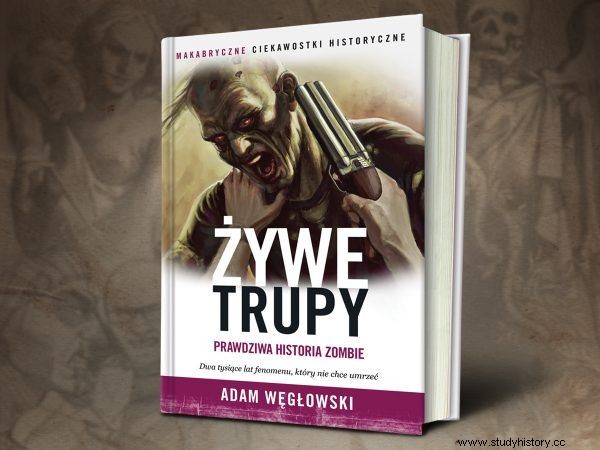
This type of dead is called a feather or a sleeper human bodies that devour themselves in the grave. As soon as one begins to devour it creates a plague, and it does not end until the body is severed from the body.
Helwing himself described a similar hunt for the living dead, not organized in Podolia, but by Masurians from the village of Harsz:
As in 1710, the plague was raging in our country, especially in the village of Harsz, which was large and had many inhabitants, where many people died, some called a council and remedy for the plague dig up the body of one person who died of it, and those that will have some signs that the corpse has begun to devour itself in the grave . The majority and the most important people liked this advice
This article has more than one page. Please select another one below to continue reading.Attention! You are not on the first page of the article. If you want to read from the beginning click here.
Unfortunately, they found nothing incriminating in the graves! What to do? Kusa advice. They decided:
arrange one body so that its hands and arms were chopped off and torn to claim that it was the same devouring corpse. Then they started their work:after singing some songs for the dead, the body was ceremonially knocked off with a spade and then thrown back into the grave with the living dog.
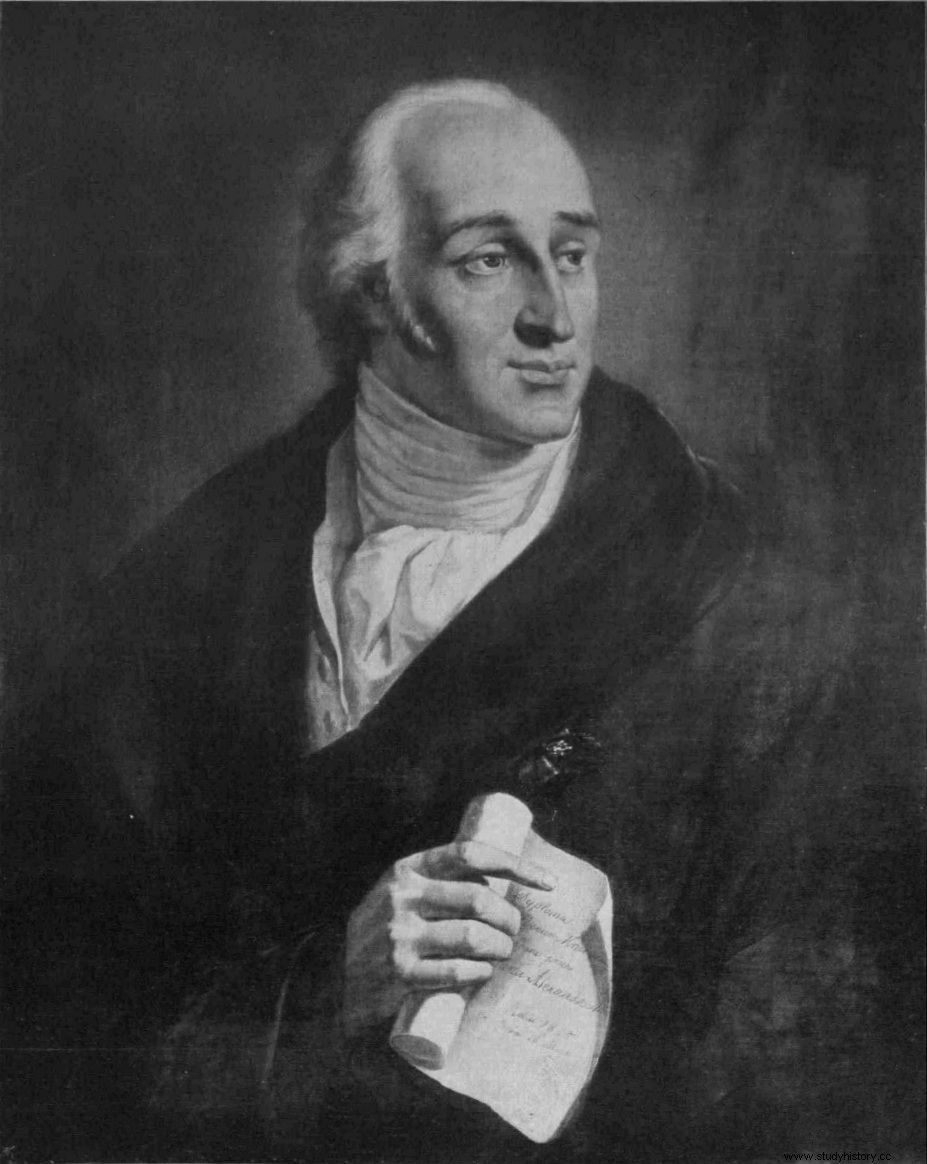
The historian Tadeusz Czacki also witnessed the hunt of zombie hunters (source:public domain).
Of course, it did not work. On the contrary, the plague has raged even more, and of the hunters of the living dead almost no one was left alive . But our ancestors knew theirs anyway. The historian Tadeusz Czacki (1765–1813) recalled how when he was young he saw in Volhynia how people were looking for ghosts, the heads were cut off with a hoe, and the heart was pierced with an aspen wheel …
Wise men in collars
Interestingly, these superstitions were supported by our great-grandfathers by their Christian faith and their clergy ! Let us take the "encyclopedia" by Father Benedykt Chmielowski "New Athens" (1745–1746). The saintly "connoisseur" argued that:
May God possess the devil and the baptized person, torment many who are still alive for many years, as without a number they are possessed, and why not try to do it after the death of the body, alias corpse, already abandoned from an innocent, righteous soul, mastered, walked in it, infected?
Therefore, many suspicious bodies during which plague, disease, death they unearth, they find as bloody as alive, which were like a pale shawl in their lifetime; often holding his shirt in his teeth. Their heads are cut off, their hearts are pierced, many of them flow out of blood …
Also in the West, clerics wrote about ghosts circulating in Polish lands. For example, the French Benedictine and demonologist Antoine Augustin Calmet reported in the 18th century that Polish undead happened even at count's courts and among priests . So it's no wonder that "the dark folks bought it."
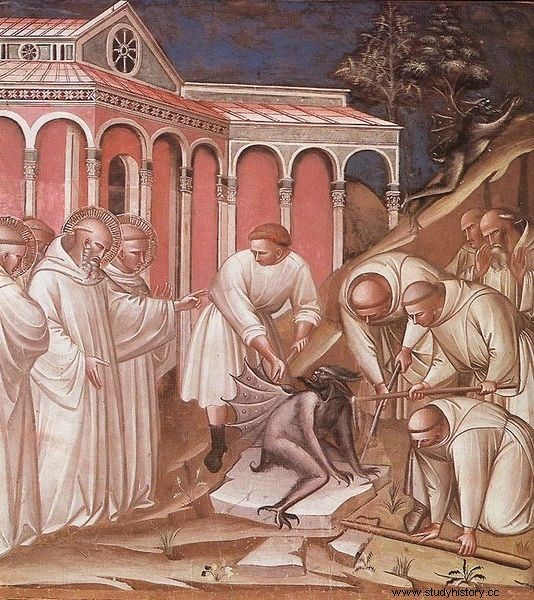
The fight against demons and Strigoias has been of interest to the Church for centuries. Sometimes it is fatal (source:public domain).
And he fixed it forever. Because only by accident did such places appear on the map of Poland as Strzywacaniec, and among surnames such as Strzyga? They were either a sign of the gallows sense of humor and malice of our great-grandfathers, or they were a warning sign. Be careful, this is where zombies spawned! Be careful, this family once had a living dead…
***
Polish hunters of the living dead, disgusting rituals of Caribbean shamans and crimes committed at distinguished courts in Europe. Adam Węgłowski travels continents in search of stories that will keep you awake at night. Only now you can buy a new book "Historical Curiosities" up to 30% cheaper!

Not only about zombies. But only a true story. Visit the bookstore!
